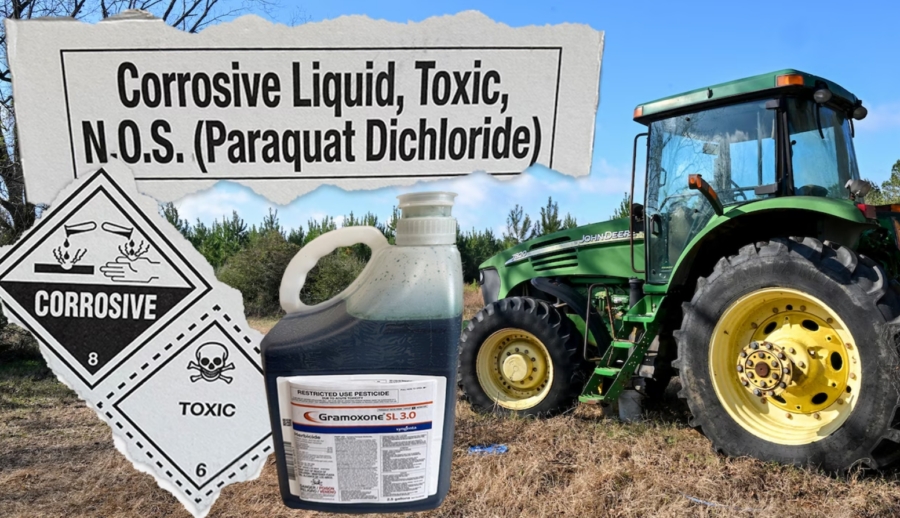
Last month, wildlife lovers said goodbye to an icon: Grizzly 399, the oldest known mama grizzly bear in the Greater Yellowstone Ecosystem, died after being struck by a vehicle.
This week, the world-famous bear was memorialized in a vigil, wil nature lovers from all over gathering to say goodbye.
399, Yellowstone’s most famous grizzly
On October 22, Grand Teton National Park, in Wyoming, announced the heartbreaking death of grizzly bear 399 after she was struck by a vehicle on a highway in Snake River Canyon.
The 28-year-old mama grizzly had been an icon of the park system for decades. She was the oldest known reproducing female grizzly bear in the Greater Yellowstone Ecosystem, and a beloved favorite for millions of tourists.
She was tagged for research by the Interagency Grizzly Bear Study Team in 2001, and was thus known by the tag number “399.” Over the years, she became the most famous grizzly in the park system.
Surviving well into her 20s, 399 survived longer than the average grizzly. She was also known for her large progeny, birthing at least 18 cubs over the years. In May 2023, when she was 26 or 27 years old, she was seen coming out of hibernation with a new baby cub, making her the oldest-known grizzly mother in history.

“A special day in the world of the grizzly bear,” wildlife photographer Tom Mangelsen said at the time. “Her honor and fame in grizzly bear history has been sealed. Never again will another like her come our way.”
Ambassador for her species
399 was also a favorite among visitors to the park system. Unlike most grizzlies, 399 resided near human areas and could often be spotted near roads, making her one of the most sought-after and photographed animals in Yellowstone. She was a favorite online, with Facebook and Instagram pages dedicated to her.
399’s fame also came with a price, as there were also those who wanted to claim her as a trophy. When grizzly bears were removed from the endangered species list in 2017, they became a target of hunters. “I met a guy who wants grizzly 399’s rug on his wall, stating that because she is famous, she makes a better trophy,” wildlife photographer Daryl Hunter told National Geographic. Their protections were reinstated by a federal judge in 2018.
While no longer on the endangered species list, the grizzly bear is considered threatened. With all her cubs and grandcubs, 399 definitely did her part to support the population, and she will be remembered as an ambassador to the species whose fame brought attention to their need for conservation.

“The grizzly bear is an iconic species that helps make the Greater Yellowstone Ecosystem so extraordinary. Grizzly bear 399 has been perhaps the most prominent ambassador for the species. She has inspired countless visitors into conservation stewardship around the world and will be missed,” said Grand Teton National Park Superintendent Chip Jenkins.
399 had a young cub with her at the time of her death, and his whereabouts are currently unknown. However it doesn’t appear that he was struck by the vehicle and it is possible he is surviving on his own.
Vigil for 399
Grizzly 399’s death devastated park officials and her many fans around the world. The bear’s ashes were spread this week at the Pilgrim Creek area of the Grand Teton National Park, where she spent much of her life, park officials told AP.
And this weekend, a vigil was held in her honor, attracting dozens of people from across the country. “I felt like it was important just to be here,” Sarah Hughes, a mourner who traveled from Kentucky, told Cowboy State Daily. “To remember 399 and the legacy that she leaves behind.”

“I’ve cried every night since she died,” Oregon resident Sheila Franklin told the outlet. “She meant a lot to me, watching her in the wild raising her cubs. I think a lot of human mothers could learn from how she raised her cubs and how loving she was towards them.”
The mourners braved heavy wind and rain to attend the vigil, which included a moment of silence, a playing of Louis Armstrong “What a Wonderful World,” and fond memories of the world-famous bear.
Master of ceremonies Jacob Krank remembered seeing 399 for the first time 13 years ago: “She looked right at me, just right in the eye. It was just such a profound experience,” he told the crowd, per AP. “It was as though she was saying, ‘Welcome home. Where have you been all this time?’”
“399 will always be part of this special place,” Grand Teton National Park Superintendent Chip Jenkins said in a statement. “However, there is still work to do to ensure her descendants and all grizzly bears continue to thrive in the greater Yellowstone ecosystem. It’s up to all of us to make sure they do.”
Rest in peace to this amazing grizzly bear, who lived a long and incredible incredible life and left such an impact on people across the world. 399 will be missed 💔🙏
Please share this story in memory of grizzly bear 399.
How to recycle your leftover Halloween pumpkins — and make some animals very happy
Pumpkins and jack-o-lanterns are a classic part of Halloween, and many of us have some outside our home as part of the seasonal decor. But when those last trick or treaters have left and Halloween ends, what do you do with them?
No one wants to see their pumpkins rot away on their lawns, but thankfully there are ways to recycle your old gourds, and make some hungry animals happy in the process.

Feed your pumpkins to wildlife
Pumpkins aren’t just fall decorations — they’re quite tasty and nutritious, and make a perfect snack for your local wildlife once you decide to discard them. Squirrels, raccoons and deer will happily nosh on some pumpkin, as will birds and insects.
If you want to feed your leftover pumpkins to the animals, it’s crucially important to remove any decorations in the jack-o-lantern that might be harmful to wildlife. If you lit a candle inside, make sure to remove it and any leftover wax. Glitter, glue, paint, etc should also be removed.
Then, cut your pumpkin into chunks and leave them outside in a secluded spot, away from any roads. In time, animals will come picking.
You can also feed pumpkin to any animals you have at home. Pumpkin is safe for dogs, and is found in many dog foods, just avoid feeding them the stem or leaves. Pumpkin can also be fed to livestock in moderation — again, just make sure no non-edible decorations end up in their food.
Pumpkin seeds also make a great snack for birds, if you have any leftover from your scooped-out jack-o-lantern.
Donating pumpkins
If you don’t have any hungry animals around your house, you might also consider donating pumpkins to your local animal farm, zoo or sanctuary.
Pumpkins for Pigs is one charity dedicated to reducing food waste by redirecting pumpkins to animals: according to their site, they have diverted 800 tons of food that would’ve ended up in landfills. You can use their website to find registered farms and sanctuaries who will take your old pumpkins.
You can also contact your favorite local shelter or farm to see if they are accepting donations for their animals.
Sometimes pumpkins can bring unexpected joy to animals in need. Last year, a couple donated their massive 465-pound pumpkin to a pair of orphaned bear cubs in the care of the San Diego Humane Society, and it became their favorite plaything.
Pumpkins and jack-o-lanterns are such a joy to have around the house during Halloween, but it’s a shame to let them go to waste! Giving them a second life as food for animals is a great way to recycle them and make some animals happy! 🎃
Please share this story to spread the word!

































:max_bytes(150000):strip_icc()/GettyImages-216767353221-3bc075f308e4475c975ccdcf2c607f25.jpg?w=1200&resize=1200,0&ssl=1)
:max_bytes(150000):strip_icc():focal(749x0:751x2)/jimmy-kimmel-donald-trump-121625-d4d7d69414e34259a91087e5874f74a9.jpg?w=1200&resize=1200,0&ssl=1)
:max_bytes(150000):strip_icc():focal(960x498:962x500)/Angelina-Jolie-Gotham-awards-120224-2-a4864f8361dc4201bc37e5829989a9f2.jpg?w=1200&resize=1200,0&ssl=1)






